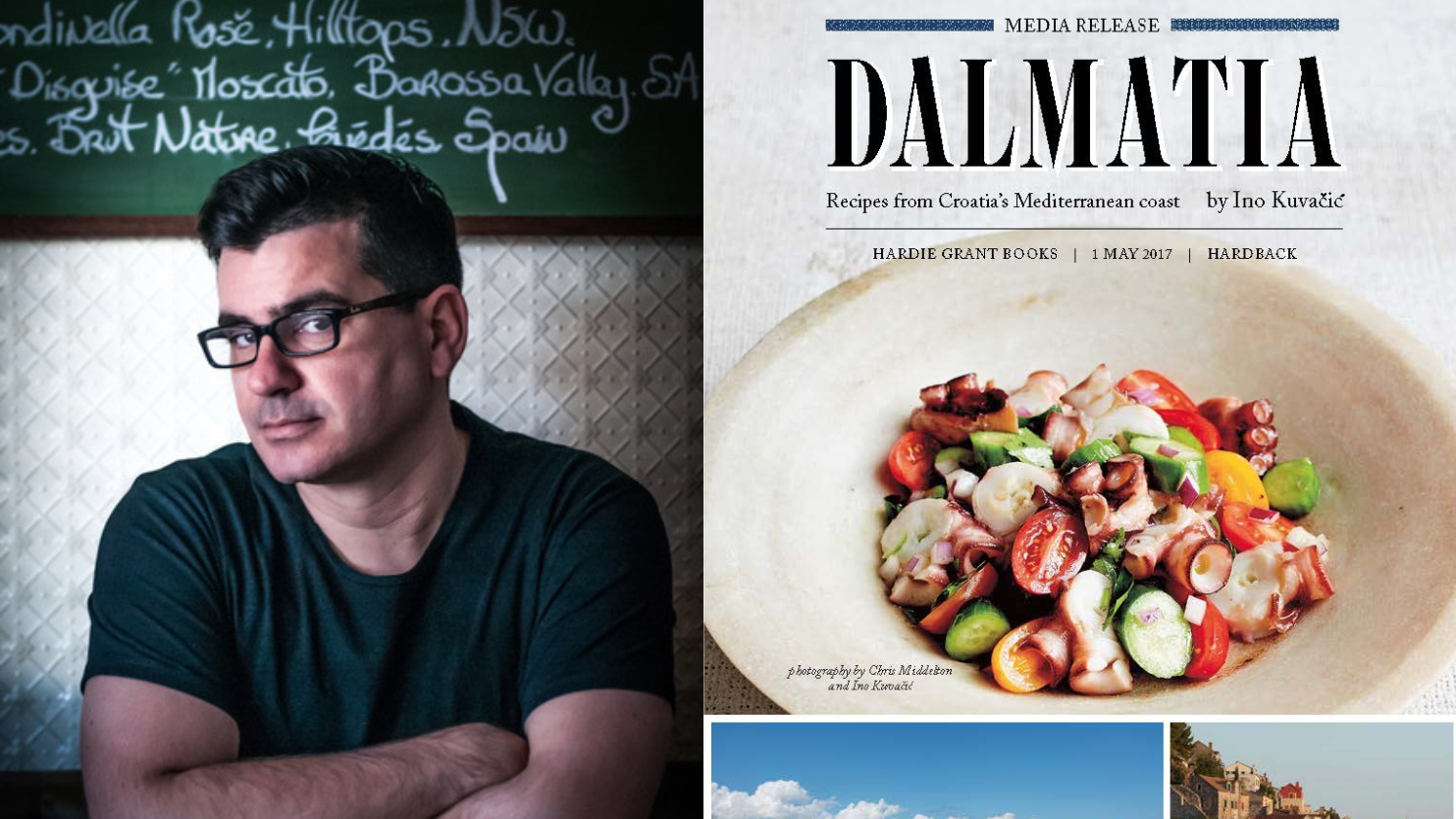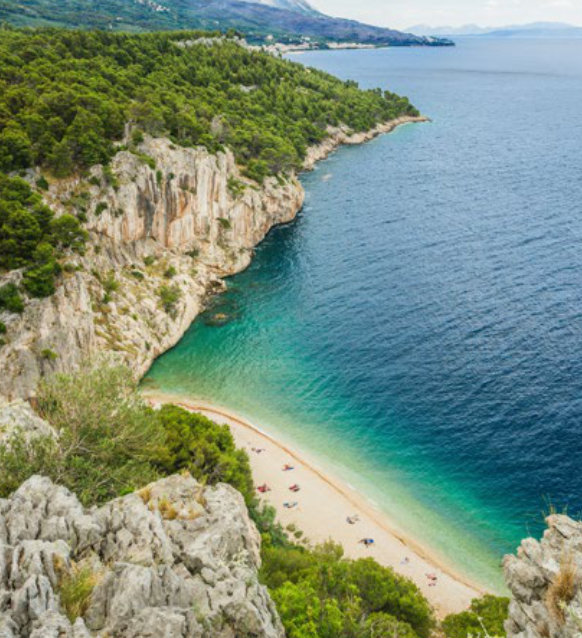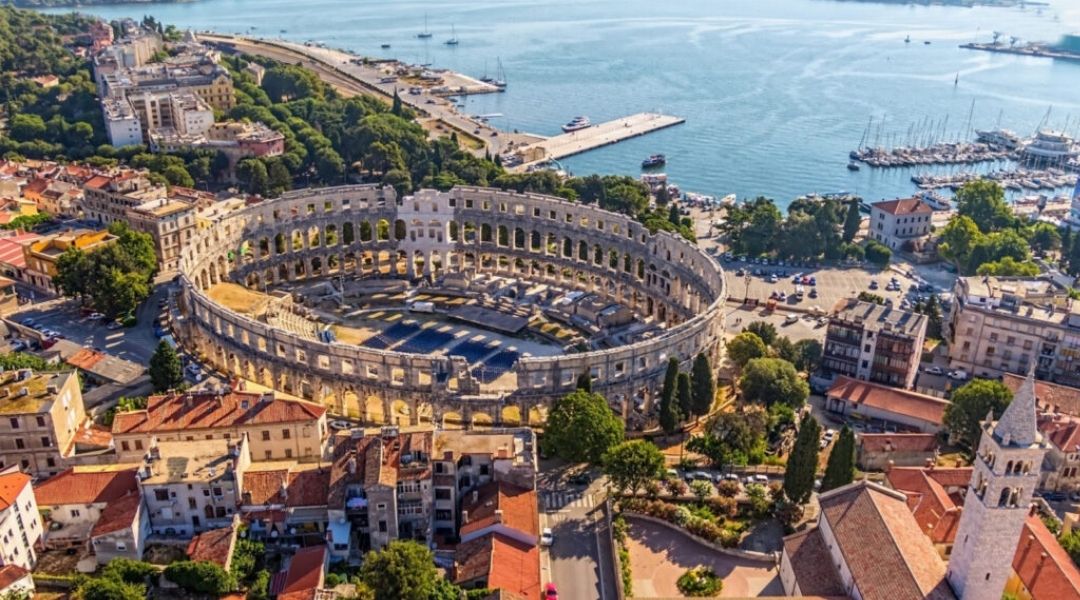Married to our very own Marijana Kuvačić, Ino Kuvačić is a Croatian chef and author. He has worked in some of the top restaurants in Croatia and authored the book Dalmatia: Recipes From Croatia’s Mediterranean Coast. We interviewed him to find out more about Croatian cuisine, food, and wine from someone who knows it best.
Please tell us a little bit about yourself and what you do.
I’m a chef, restaurateur, and cookbook author with a deep passion for Dalmatian regional Croatian cuisine. I was born in Split, Croatia, but spent most of my life in Australia, where I had the privilege of working as a chef in some of the finest restaurants before opening my own, Dalmatino. Now, I’m back in my homeland, Croatia, where I continue to nurture my love for cooking, focusing on exploring local produce, wine, and traditional recipes, while sharing the rich culinary heritage of the Dalmatian region with the world.
How would you describe the food scene in Croatia?
Croatia boasts a vibrant and rapidly evolving food scene, with an impressive number of Michelin-starred restaurants that have garnered international acclaim. The country is blessed with exceptional local produce and wine that can hold their own against the best in the world. Some of my personal favorite dining spots include Pelegrini in Šibenik, Konoba Vinko in Konjevrate, and Dvor in Split. Travelers who visit Croatia are often amazed by the high quality of our wines and the remarkable flavors of our local produce, which reflect the country’s diverse culinary heritage.
What are some of the lesser-known Croatian ingredients or dishes that you think deserve more international attention?
- Dalmatinski Pršut: Croatia’s exquisite version of prosciutto, which is smoked for a few days to achieve its distinct, rich flavor.
- Varenik: A traditional grape juice reduction, often used as a natural sweetener, that adds depth and complexity to sauces and desserts.
- Paški Sir: A world-renowned sheep cheese from the Island of Pag, celebrated for its unique flavor and twice awarded the title of the world’s best.
- Istrian Truffles: Among the finest wild truffles in the world, both white and black varieties are found in Istria.
- Boškarin: A prized beef breed native to Istria, known for its tender and flavorful meat.
- Kvarnerski Škampi: Exceptional scampi from the Kvarner region, renowned for their delicate taste.
- Paška Janjetina: Lamb from the Island of Pag, celebrated for its tender and flavorful meat.
- Dalmatian Salt: Harvested from the historic Ston or Nin saltworks, this salt is revered for its purity and mineral content.
- Dalmatian and Istrian Olive Oil: Regular winners of gold medals at the New York International Olive Oil Competition, these oils are considered among the finest in the world.
- Prošek: A traditional fortified wine from Dalmatia, cherished for its rich, sweet flavors.
Do you prioritize local and seasonal ingredients? How does Croatia’s geography influence your ingredient selection?
Absolutely, I always prioritize seasonal and local ingredients, which I believe are the backbone of authentic Croatian cuisine. Croatia’s diverse geography, spanning from the Mediterranean coast to the continental interior, profoundly influences the variety and availability of ingredients. The Mediterranean regions, including Istria, Kvarner, and Dalmatia, are known for their olive oil, fresh seafood, and aromatic herbs, while the continental regions like Slavonia, Lika, and Zagreb are rich in dairy, meats, and hearty vegetables. This geographical diversity allows Croatian cuisine to offer a wide range of flavors and ingredients, each reflective of the region’s unique climate and cultural influences.
How do you see Croatian cuisine evolving in the future? Do you think it’s becoming more recognized on the global culinary stage?
Croatian cuisine is on the cusp of gaining the global recognition it truly deserves, much like our national soccer team has achieved on the world stage. We may be a small country, but we’re blessed with incredibly talented chefs and exceptional produce. The increasing number of Michelin-starred restaurants and the growing interest in our indigenous wines and ingredients are strong indicators that Croatian cuisine is set to make a significant mark internationally. I’m confident that as more people discover the depth and richness of our culinary traditions, Croatian cuisine will become renowned as one of the world’s finest.
Croatia has a strong tradition of preserving and passing down recipes through generations. How do you balance respecting these traditions while also innovating and pushing the culinary boundaries?
The recipes I work with have been passed down through generations, each one a testament to the rich history and culture of Croatia. My approach is to honor these traditions by preserving the integrity of the flavors and ingredients that define them, while also applying modern techniques and presentation styles to elevate the dishes. It’s about finding a balance—staying true to the essence of the recipe while also embracing innovation to enhance the dining experience. This way, I can offer something both familiar and exciting, keeping our culinary heritage alive and relevant.
What is your favorite Croatian dish to prepare, and what makes it special?
Having been born in Split and spending much of my childhood on the Island of Šolta, I developed a deep appreciation for both meat and seafood dishes. My favorite dish to prepare is Brujet, a traditional fish stew served with soft polenta. What makes Brujet special is its simplicity and the way it captures the essence of the Dalmatian coast—the fresh, briny flavors of the sea combined with the warmth of slow-cooked tomatoes, garlic, and local herbs. It’s a dish that speaks to my soul, connecting me to my roots and the culinary traditions of my family.
What are your thoughts on Croatian wine, and what is your favorite?
Croatia is home to an astounding 250 indigenous grape varieties, each offering something unique to the wine landscape. Some of my favorites include Babić, Dobričić, Crljenak (the ancestor of Zinfandel), Plavac Mali, Malvasija, Debit, Vugava, Grk, Pošip, Teran, and many others. While I appreciate all of these wines, my personal favorite is Dobričić, particularly the one crafted by the Burica family. The wine’s distinctive carob and sour cherry notes evoke memories of my childhood, making it a deeply personal and nostalgic choice for me.
If you are wanting to try Croatia’s incredible gastronomy scene firsthand, get in touch with us today. From Croatia Tours, such as our Wine and Culinary Delights tour, to customized travel plans to Croatia, our friendly and knowledgeable team are here to help you plan the vacation of your dreams.





